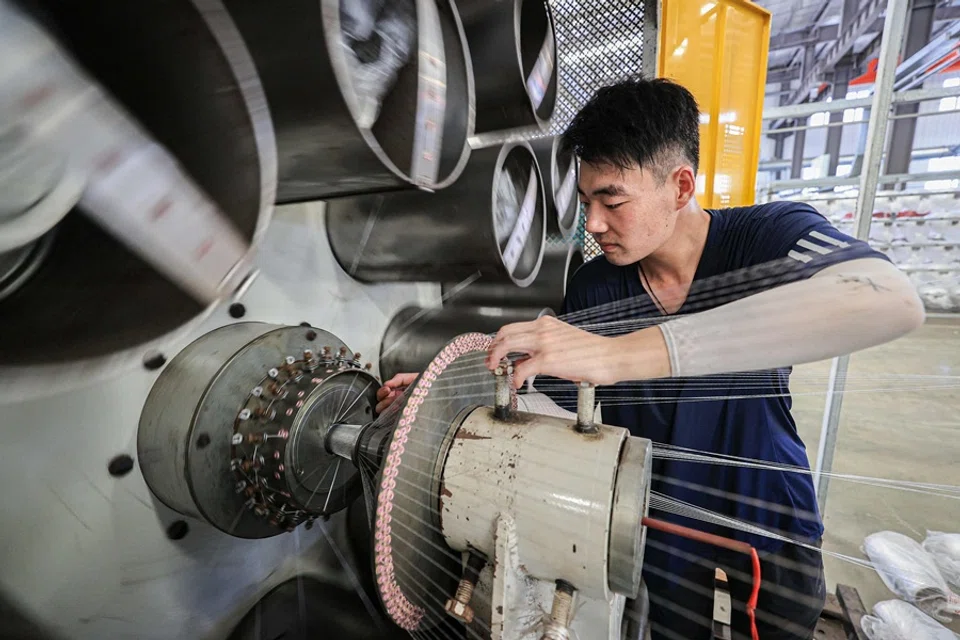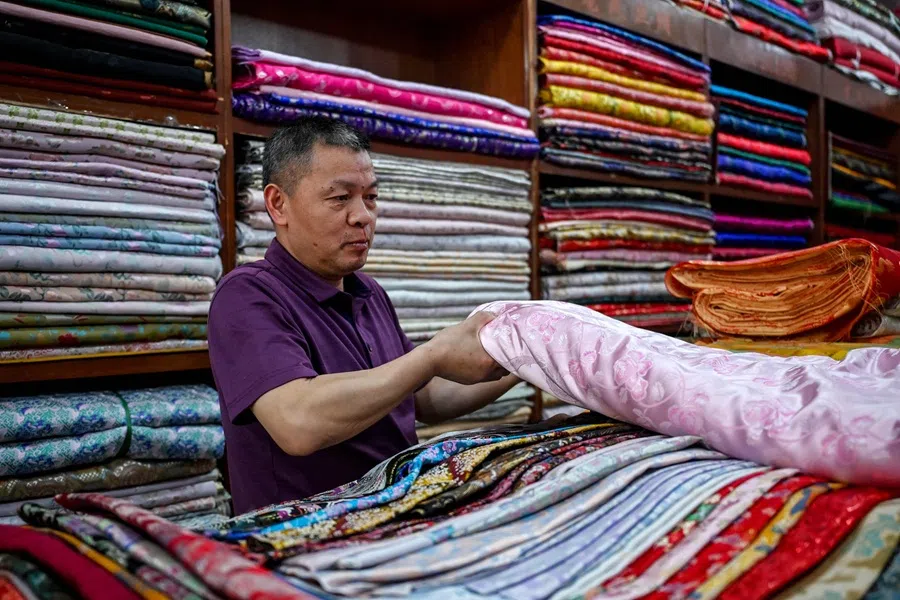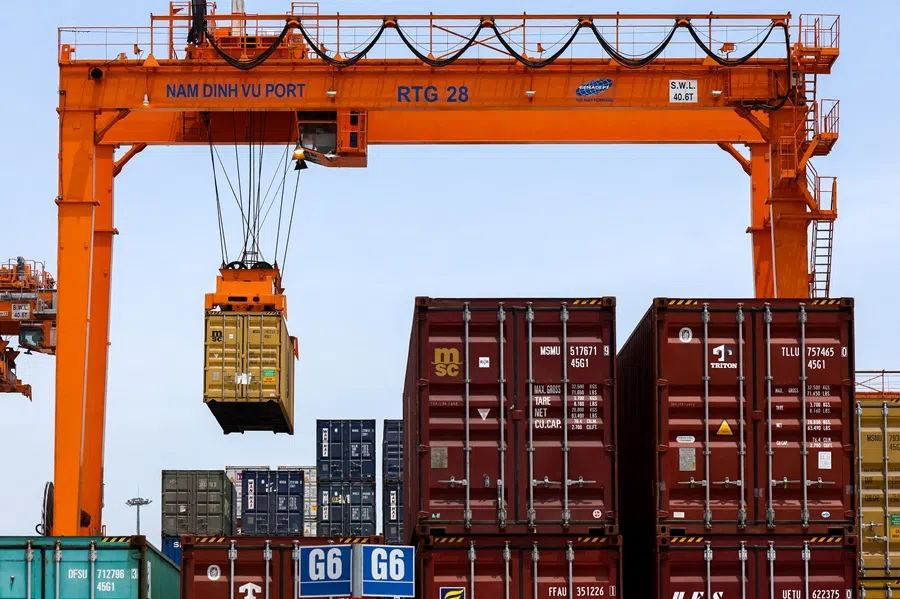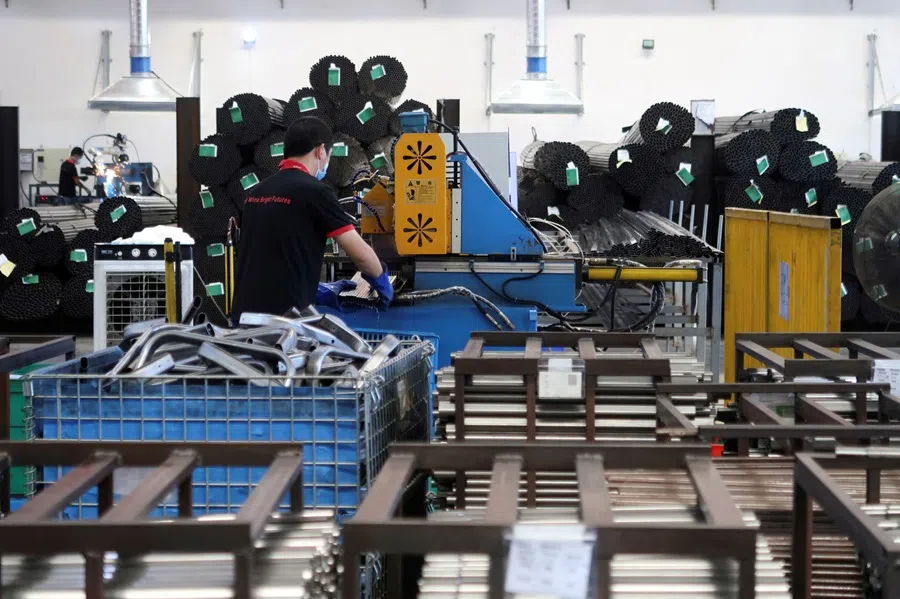The US–Vietnam deal: A paper tiger for China?
Despite changing scenarios and China taking a hit from tariffs on goods produced in third countries, EAI senior research fellow Bo Chen thinks that the impact on Chinese producers would still be rather insignificant unless US-China trade negotiation fails and the trade war escalates again.

On 2 April, on what he called “Liberation Day”, President Trump announced that the US would impose reciprocal tariffs on the rest of the world, due to “trade imbalances”. Soon after, on 9 April, he announced a 90-day pause on implementing those tariffs, pending negotiations of bilateral trade deals.
In the reciprocal tariff conflict, China, in particular, was levied a “reciprocal tariff” of 34% on top of existing tariffs. China swiftly retaliated, leading to a “tit-for-tat” escalation that caused US reciprocal tariffs to surge from 34% to 150%. Meanwhile, China’s tariffs eventually increased to 125%. Such high tariffs resulted in an almost sudden halt to bilateral trade between the two biggest trading countries.
After the Geneva talks on 12 May, the US and China hailed a truce of the tariff war, leaving a 10% reciprocal tariff on China. According to the Peterson Institute for International Economics, counting all existing tariffs, the US tariffs on China were about 51.1%, whereas the Chinese equivalent was around 32.6% as of 10 July.
It is clear that no country likes reciprocal tariffs. The seemingly best strategy for them is to cooperate with each other and firmly oppose the reciprocal tariff via retaliation.
Harnessing collective strength against US tariffs?
As the 9 July deadline for the pause passed, the Trump administration’s ambitious “90 days for 90 deals” goal fell short. While the administration claimed three trade deals, only the agreement with the UK has been officially confirmed. The second deal with Vietnam is still awaiting official approval, and the third with China remains merely a framework for negotiation.
Given the number of countries involved and the complex interests at play, resolving the global tariff war — particularly between the US and China — is highly complicated. The situation can be aptly framed through the lens of classic game theory: the US acts as the judge, urging the “prisoners” — other countries — to confess, meaning to align with its specific trade demands. Meanwhile, each country is left to navigate its own strategic response, weighing national interests against the pressures of a shifting global trade order.

It is clear that no country likes reciprocal tariffs. The seemingly best strategy for them is to cooperate with each other and firmly oppose the reciprocal tariff via retaliation.
According to the World Bank, the rest of the world accounted for roughly 73% of the global GDP and 84% of the global trade in 2024. Therefore, China aims to harness collective strength to oppose US reciprocal tariffs by emphasising its commitment to globalisation and adherence to international rules. Additionally, China was the first country to promptly retaliate against these tariffs.
By acting sooner than others, they hope to minimise economic harm and reduce political pressure on their governments. However, this approach can lead to a “prisoner’s dilemma”...
One for all, or every nation for itself?
However, while the cooperative approach can protect countries’ interests in the long run, it requires players to bear the short-run loss: the costs of confronting the US. More importantly, the ability to withstand these costs varies substantially among countries. For smaller nations or those heavily dependent on the US market, the short-run costs can be intimidating.
Furthermore, since the cooperative game would be beneficial only in the long run, to play the game sufficiently long to deter the US requires all the countries to trust each other during the game period. Such trust in joint actions against the US seems hard to establish and maintain, given the vast difference in the countries’ political agendas. Therefore, China became the first but also the only country that retaliated against the US (as of 10 July).
Countries may pursue an alternative strategy by negotiating deals with the US individually, aiming to secure discounted reciprocal tariffs. By acting sooner than others, they hope to minimise economic harm and reduce political pressure on their governments. However, this approach can lead to a “prisoner’s dilemma”, where the US pressures countries to “surrender” by threatening even higher tariffs or additional economic sanctions for those deemed “non-cooperative”.
Other nations’ trade deals could also ‘target’ China
Though China is working on its own deal with the US, the potential deals of other countries are nevertheless a concern with China. For instance, it is reported that the US-Vietnam trade deal contains a clause stating that products shipped from Vietnam to the US with content from other countries (i.e. China) would be subject to a 40% tariff, compared to a 20% tariff on Vietnamese products.
As Vietnam is one of the most important trading partners to both the US and China, with massive supply chain cooperation with China, this reported trade deal between Vietnam and the US raises significant concerns. There are worries that this deal could act as a “poison pill”, potentially destabilising supply chains connected to China.
... a 40% tariff could be imposed on products made by firms owned or controlled by a third country, such as China, even if these products are manufactured in Vietnam.

The general interpretation is that the US tariff scheme is based on “country of origin”. This means specific tariffs would be applied based on the share of content in the products from different countries, even if they are produced in and shipped from Vietnam. In practice, products would not be deemed a local product unless the local value-added share exceeds some criteria.
However, within the context of the US-China rivalry, an alternative and potentially more concerning interpretation for the market is that a 40% tariff could be imposed on products made by firms owned or controlled by a third country, such as China, even if these products are manufactured in Vietnam.
Ultimate impact might be modest
Regardless of which interpretation proves accurate, it would certainly impact China’s supply chains with Vietnam and other countries with similar clauses. However, the negative impact might be modest.
Firstly, local content requirements can often be met through transfer pricing, a common practice where multinational firms set prices for goods and services traded between their branches across borders. This helps companies allocate profits in a way that can reduce overall taxes. However, due to the diverse nature of intermediate inputs and specialised technological requirements involved, verifying the true value-added shares is typically a costly and complex process.
Secondly, countries like Vietnam, located in the middle of the global supply chain, are vulnerable to various challenges when implementing the clause. The general picture is that, for emerging economies like Vietnam, China is typically the largest investor in the manufacturing sector, while the US serves as the biggest market for their goods. To these countries, China is critical for their industrialisation and the US, for commercialisation. That is why Vietnam and countries alike have adopted the so-called bamboo diplomacy for decades, balancing relationships with both major powers.
Compared to the 20% tariff on Vietnamese products, Chinese producers could see a tariff reduction of about 10% to 15% if they choose to manufacture in Vietnam.

Thirdly, though still highly uncertain now, the future tariff difference between China and Vietnam also matters. China now faces an average tariff of about 52% from the US. In a somewhat optimistic scenario, if China can successfully strike a trade deal with the US, it may face an average tariff of 30% to 35% (i.e. the current average tariff deducted by the 20% Fentanyl tariff in February and March).
Not a tsunami?
Compared to the 20% tariff on Vietnamese products, Chinese producers could see a tariff reduction of about 10% to 15% if they choose to manufacture in Vietnam.
Before Trump’s second presidency, the US tariff on Chinese goods, as outlined in the phase one trade deal, was approximately 20%, while Vietnam faced slightly over 8% for non-agricultural products. This created a tariff advantage of around 12% for producing in Vietnam. Thus, the tariff change for Chinese producers would be minimal unless US-China trade negotiations fail and the trade war escalates again.
The US reciprocal tariffs trigger a very complicated game among all countries in the world. Though countries generally resist the tariffs, they have not done it in a cooperative way, even though China retaliated promptly. Unsurprisingly, the US-China trade disputes over the reciprocal tariff took centre stage in the game.
Unlike the US-China trade war in 2018, this time the tariff disputes and trade deals of other nations are also significant for China, due to its involvement in extensive global supply chains. If officially confirmed, the US-Vietnam trade deal could have substantial implications, potentially reshaping tariffs and supply chains, particularly concerning China. However, given the practical challenges of implementation, the “poison pill” clause, even if present, might only modestly impact existing supply chains.





